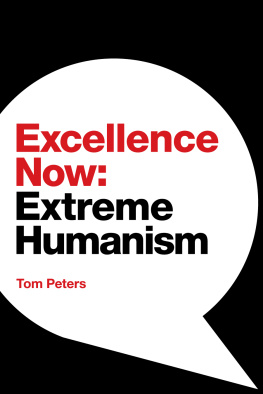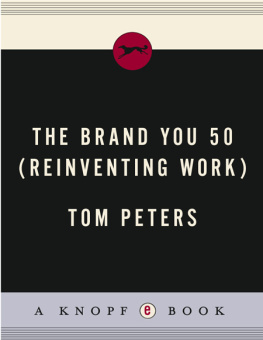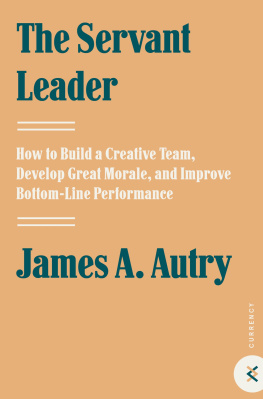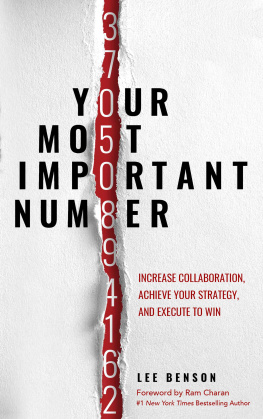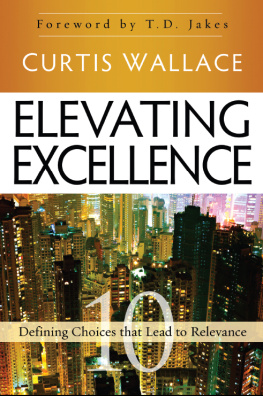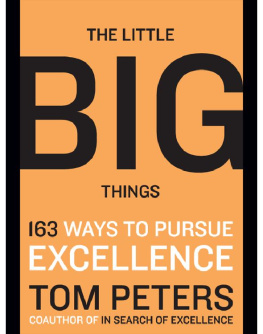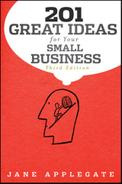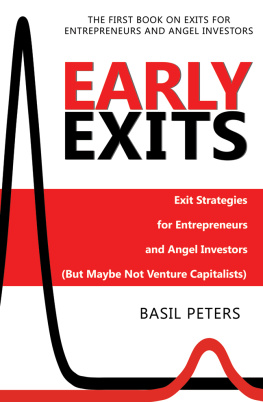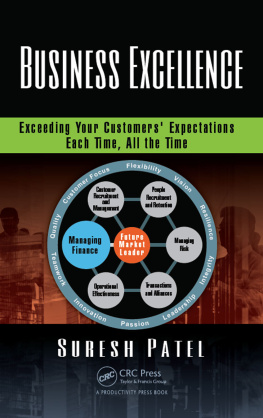Excellence Now:
The Forty-Three Number Ones
by Tom Peters
eBook: 978-1-944027-92-6
Copyright 2021 by Tom Peters.
www.networlding.com
Dear Reader,
In March 2021, I will be releasing what I believe to be my last book, Excellence Now: Extreme Humanism. It embodies, as best I can, the highlights of what I have seen, heard and learned since my first book, In Search of Excellence, was published in 1982. It attempts to capture the wisdom of so many others who have done, and continue to do, the hard work at the most human of activitiesleading, primarily by helping their team members grow to their full, and even unexpected, potential. In advance of my summa, I wanted to make available this distillation of essential ideas in hopes that it will find its own pathand leave some of my readers wanting to know more. I have found in the years since the work on my first book began that my fellow women and men are exquisitely interesting, that they continually surprise me with their creativity and resilience and thoughtfulness. There is so much potential ready and waiting to be tapped and unleashed.
People first!
Enjoy!
Reflect!
Share!
Act!
Now!
Tom
Business exists to enhance human well-being.
Mihaly Csikszentmihalyi, Good Business
If you want something said, ask a man; if you want something done, ask a woman.
Margaret Thatcher
Creating excellence is not a job. Creating excellence is a moral act.
Hugh MacLeod, gapingvoid
Table of Contents
Forty-Three Years Searching for Excellence |
Forty-Three Years Searching for Excellence
Forty-Three Number Ones
Ive been chasing excellence for forty-three yearssince 1977, when the research for what became In Search of Excellence began. The work was ignited courtesy of my boss of bosses, the Managing Director of McKinsey & Company, where I was then employed as a garden-variety consultant in the San Francisco office. The MD wondered why his talented consultants dreamed up ingenious, surefire business strategies, but clients found them difficult, if not impossible, to implement. I was given an unlimited budget to travel the worldliterally in search of ideas about and examples of effective strategy implementation in big companies.
I wrote about what I found on my global tour in that first book, in 1982. Seventeen more books and over 2,500 speeches in sixty-three countries followed. What I found, frankly, was very straightforwardnot, as they say, rocket science. Heres a brief summary:
Take care of people. Train them and train them and train them and treat them with kindness and respect and help them prepare for tomorrow. Insist that every employee commit to growth and care for their mates (this goes doubleor triplein todays troubled times). Goal: Extreme Employee Engagement (E-cubed). Bottom line: make excellence the norm in all people matters.
| Excellence Now: The Forty-Three Number Ones
Make upliftinga word chosen with great careproducts and services that literally inspire our customers and make them smile, make every employee proud of their efforts, and maybe even make the world a tiny bit better. This is the bedrock of what I call Extreme Humanismthe core of differentiation in the face of so-called efficient, dehumanized, cost-cutting, body-tossing, tech-laden services. This holds for every department in every organization in every industry.
Behave honorably at all times and be an excellent and vigorous community member and moral leader. Be able to describe your work and service activities to family members with pride, maybe even delight.
Aim for excellence day in and day out, not as a grand aspiration but as a way of life that is even expressed (or not) in, yes, your next ten-line email.
These notions add up to you and me and our peers doing work of value, work that engenders pride among all of our stakeholdersand work that pays off to a startling degree in terms of the standard business measures of sustained growth and top-tier profitability.
For some inexplicable reasonmaybe its too straightforward? many people just dont get it. Its as if theyre looking for complicated, business-school answers and miss whats right before their eyes. They miss, in particular, the power of tuned in, turned on, ready to rumble, deeply appreciated, and well- rewarded people. Coincidentally, on the day I wrote this I had an insurance issue. The tuned in, turned on, engaging, and well-trained team at the USAA call center in Phoenix made my day. For starters, they answered literally on the second ring. And then they solved my sticky problem, increased my understanding of the issue, dealt, while I was still on the phone,
Forty-Three Years Searching for Excellence |
with a middle person in an outside organization who was on my case, and treated me as if I were family (we chatted about personal work-from-home issues, John Lewiss funeral, and so on), not a productivity statistic to be dealt with quickly and discarded. Bottom line: this stuffmy stuffcan be done. In any context. And done with excellence.
The publicity for my 2018 book, The Excellence Dividend , consisted mainly of about twenty-five podcasts. I dont think its an exaggeration to say that twenty of the twenty-five started with the same question: Tom, you write a lot about people. Whats that all about? I didnt know how to respond, except to sputter and say: You cant be seriouswhat the hell else is there? In July 2020, a well-intentioned chap tweeted people are the organizations most important asset. Once again, I flipped out: People are not the most important assetpeople are the organization!
You may call that a subtle distinction. But in my scheme of things, its subtle like a freight train bearing down on you at mph. People are not part of the show or an important part of the show. People are the show. Thats my forty-three years in a nutshell. Writing and traveling and trying to direct attention away from a fixation with spreadsheets and strategic plans and instead turn the focus to the people, relationships, teamwork, products that inspire. Ive been buoyed by the fact that the most thorough long-term performance studies are of one voice: those who most heavily invest in people and the long term (for example, via robust R&D budgets) have the


